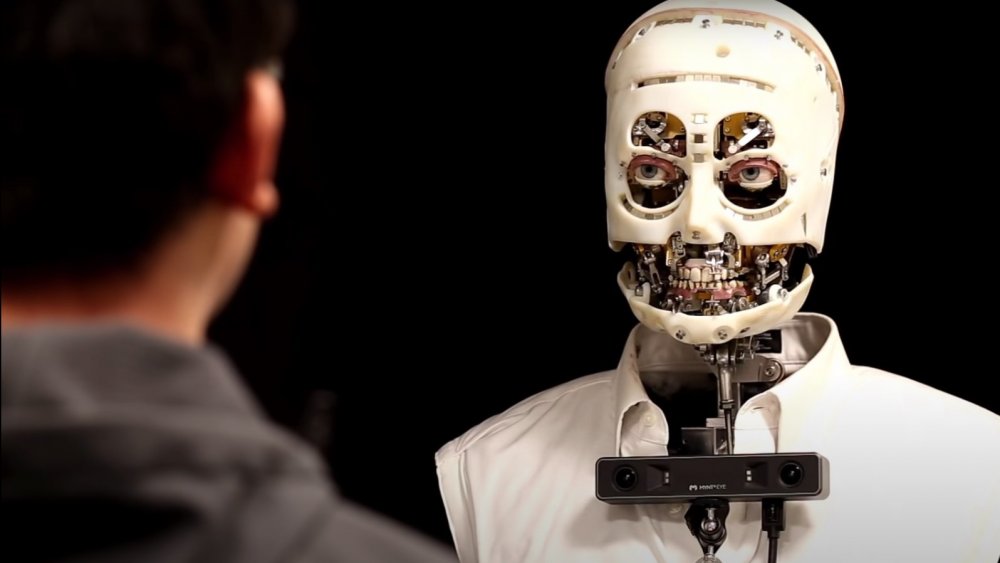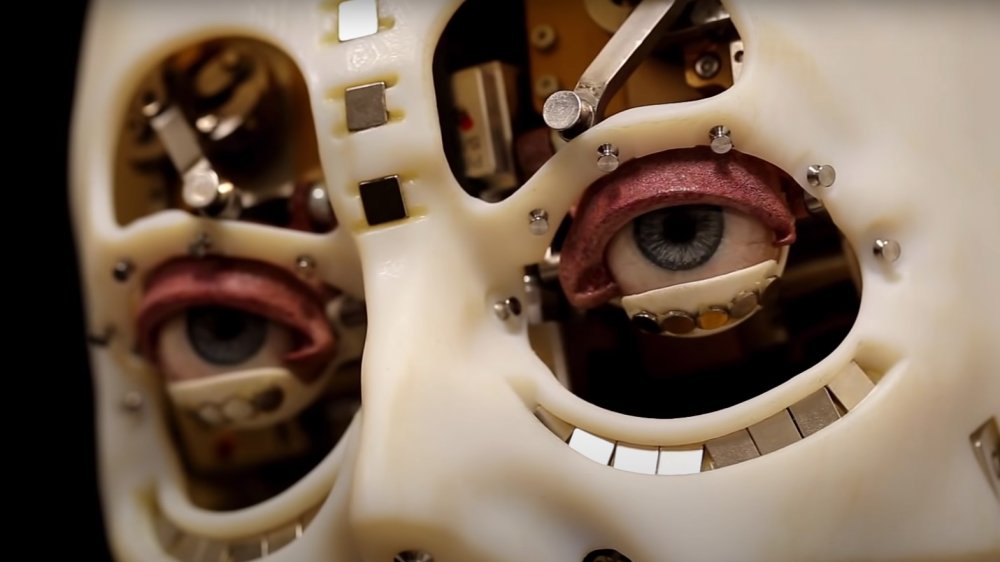The Truth Behind Disney's Creepy New Animatronic Robot
"This year hasn't been perfect," we mutter to ourselves as 2020 enters its final weeks. "It's been rough, but it could have been worse. At least Disney hasn't created some artificially living technological homunculus, caught forever in an unblinking, ghastly, agonizing scream, its lidless eyes staring into the very souls of its creators as if to ask 'why must I be?'" And darn it all if Disney doesn't reply, "Hold my ominously bubbling mad beaker of mad science goo."
Yes, the House of Mouse has developed a skinless machine man. The goal: make animatronics more lifelike. Yeah, we know, but it actually kind of makes sense. It's a stepping stone towards more immersive, realistic animatronics, incorporating simulated breathing and micromovements in the eyes to replicate actual human interactions. Also, presumably, it will eventually have skin, which will aid in completing the illusion while simultaneously helping to ward off any Five Nights at Freddy's scenarios.
The machine is being developed by Disney's Research division engineers, Walt Disney Imagineering, and researchers in the field of robotics from the University of Illinois, Urbana-Champaign and the California Institute of Technology. What role, if any, was played by the Delos Corporation, Weyland-Yutani, or the actual devil remains to be seen.
Disney friendbot status: Hungry
Here's the fascinating part: the animatronic, which doesn't have a name (but presumably calls its creators "papa" as it calls out into the darkness each night) is meant to help bridge the gap between machine and man. While animatronics have made impressive strides over the last several decades, they remain firmly planted in the "Showbiz Pizza" era in terms of realism. Utilizing the almost imperceptible human ticks that we take for granted in our everyday interactions, designers hope to create an automaton capable of fooling the human eye; a robot that passes a visual Turing test.
According to Gizmodo, its features include subtle up-and-down motions in the head, the kind that real boys make when they breathe, and the use of almost imperceptible eye twitches that the human body makes subconsciously. A series of cameras and sensors help the machine to recognize and focus in on nearby humans, responding to social cues appropriately. One day, it's possible that these innovations could create a more engaging Pirates of the Caribbean ride. Or, if they forget to put on the skin, a more traumatizing one.

